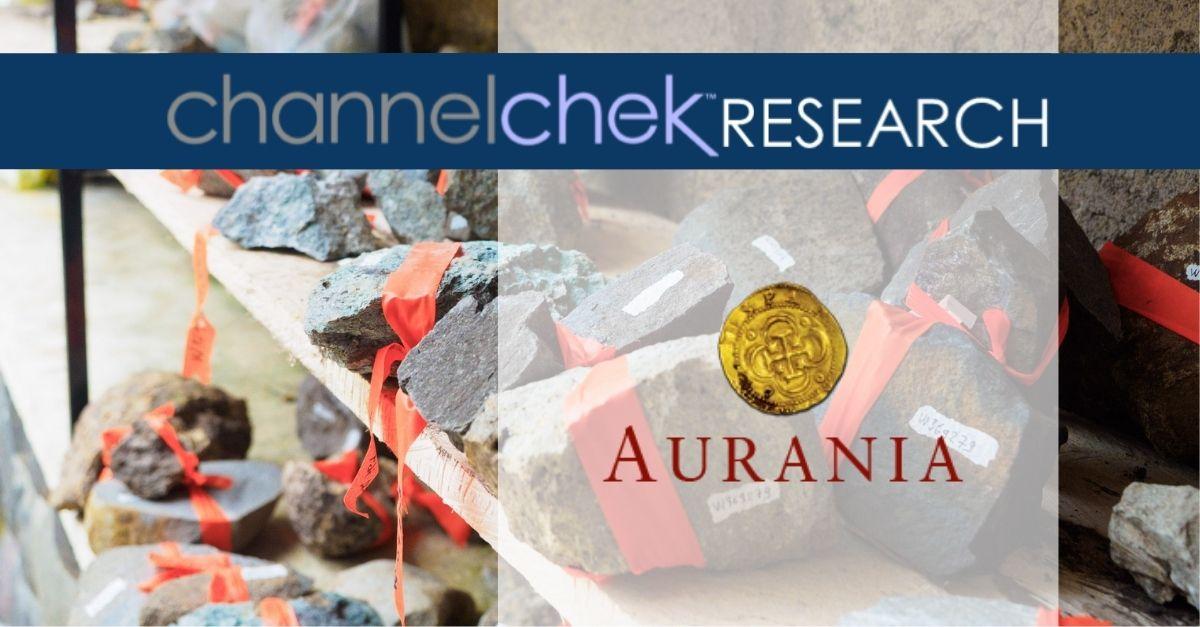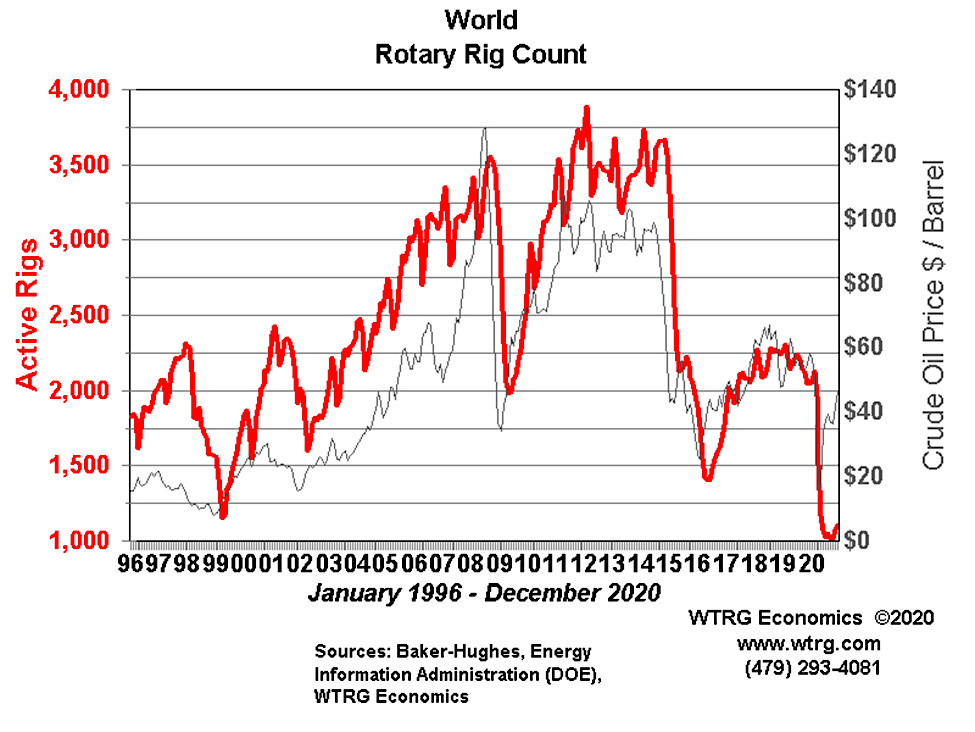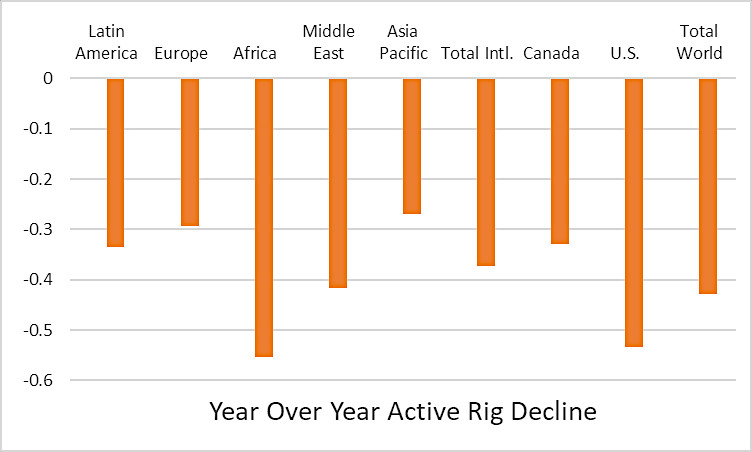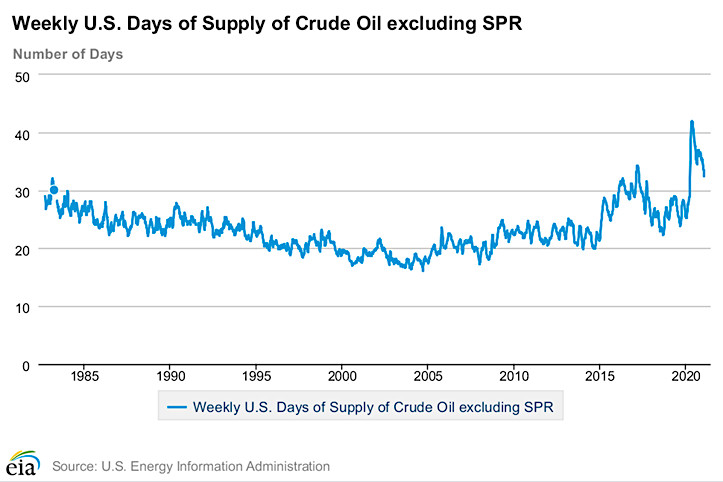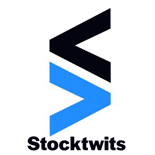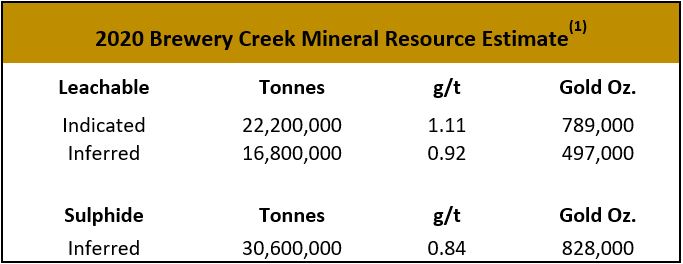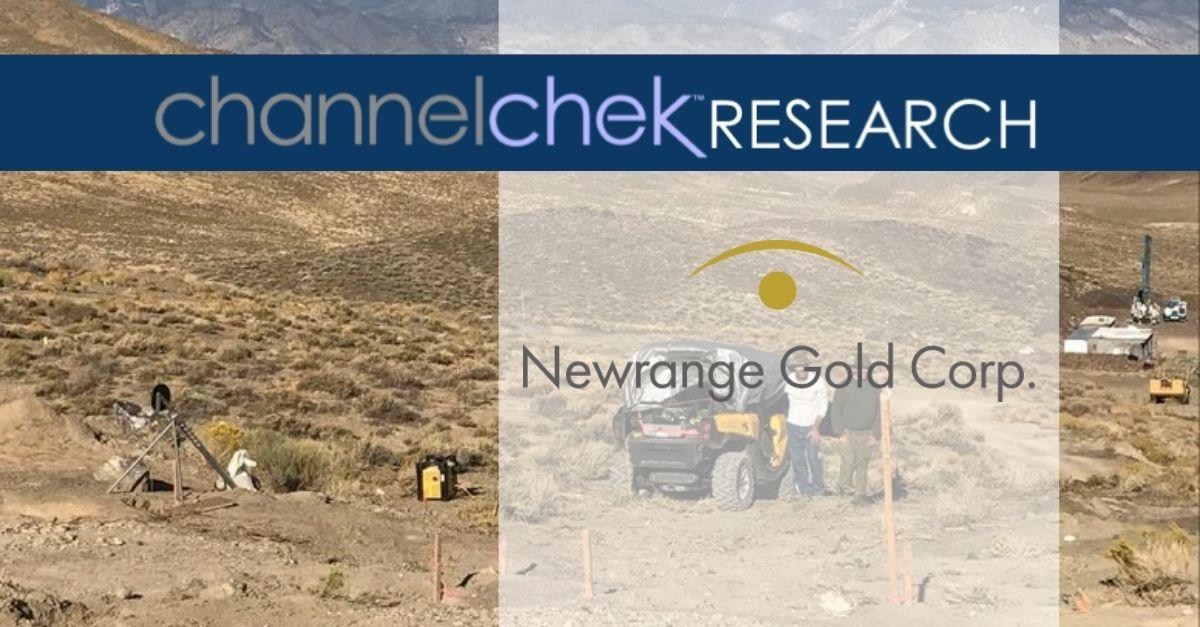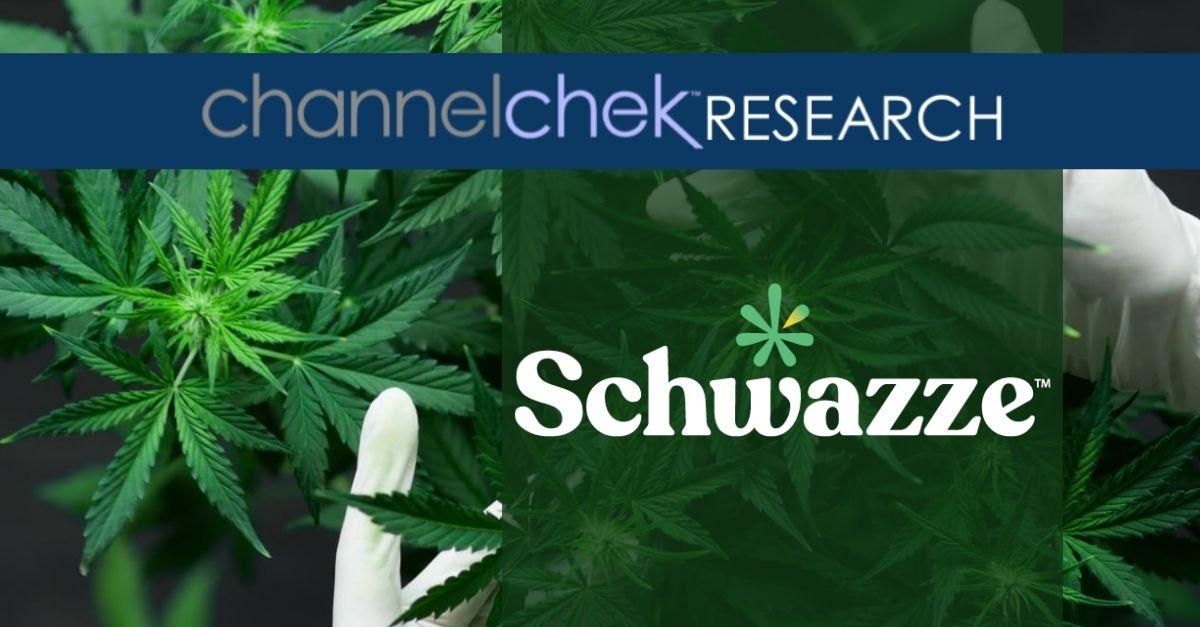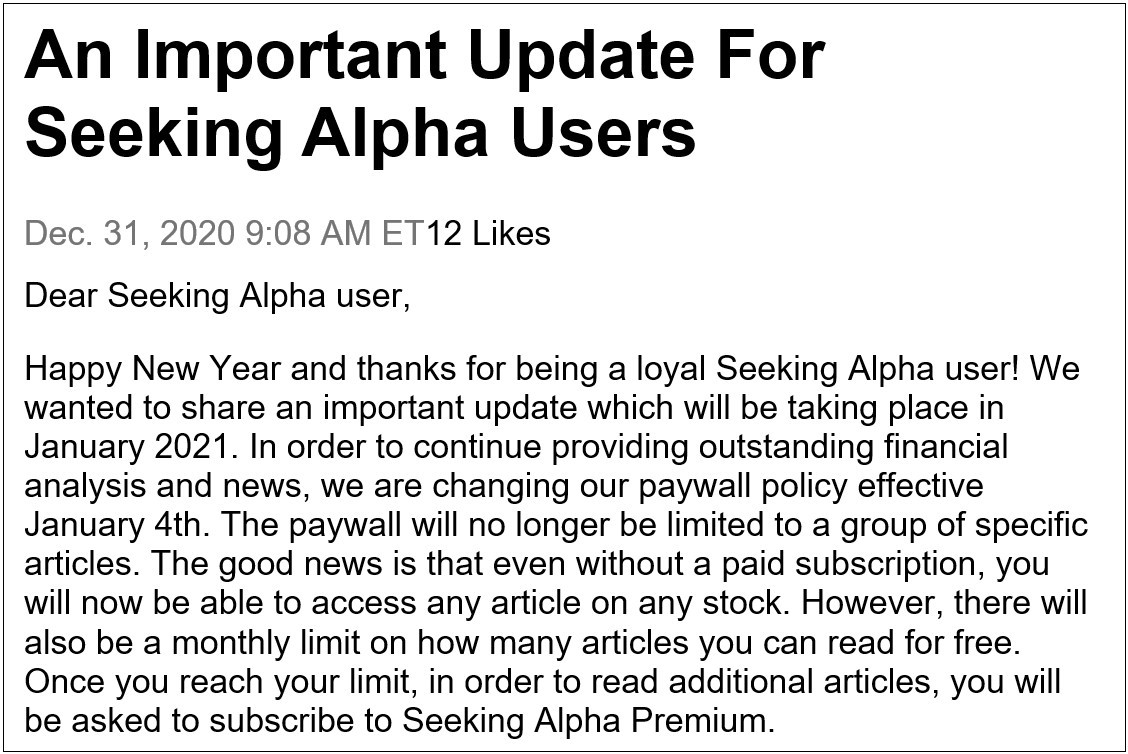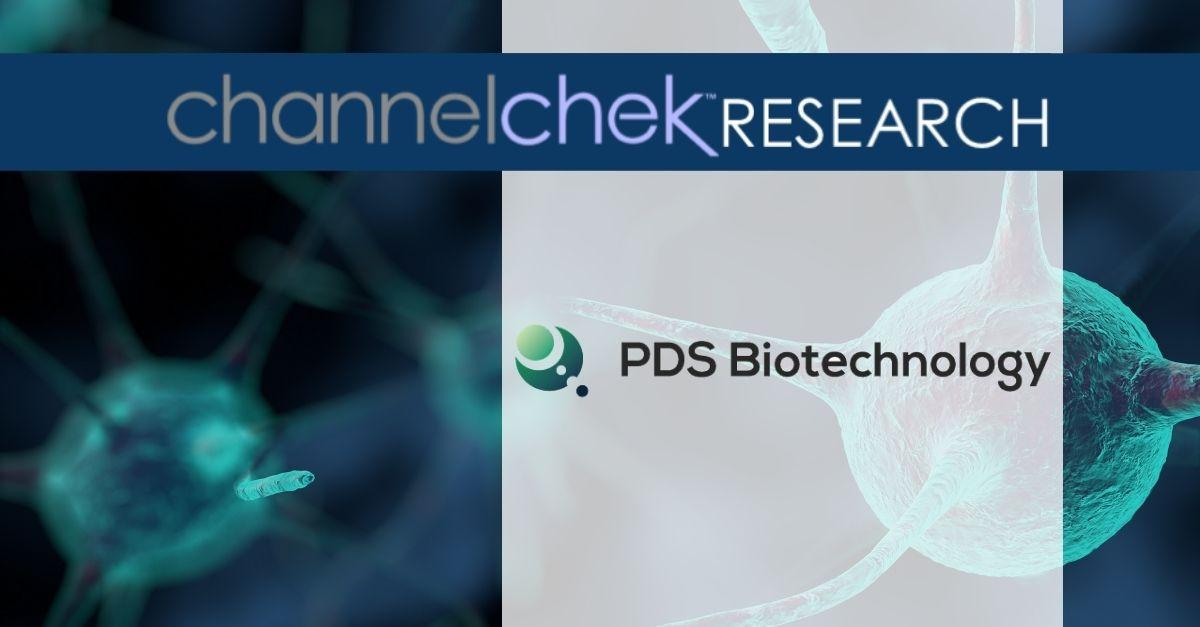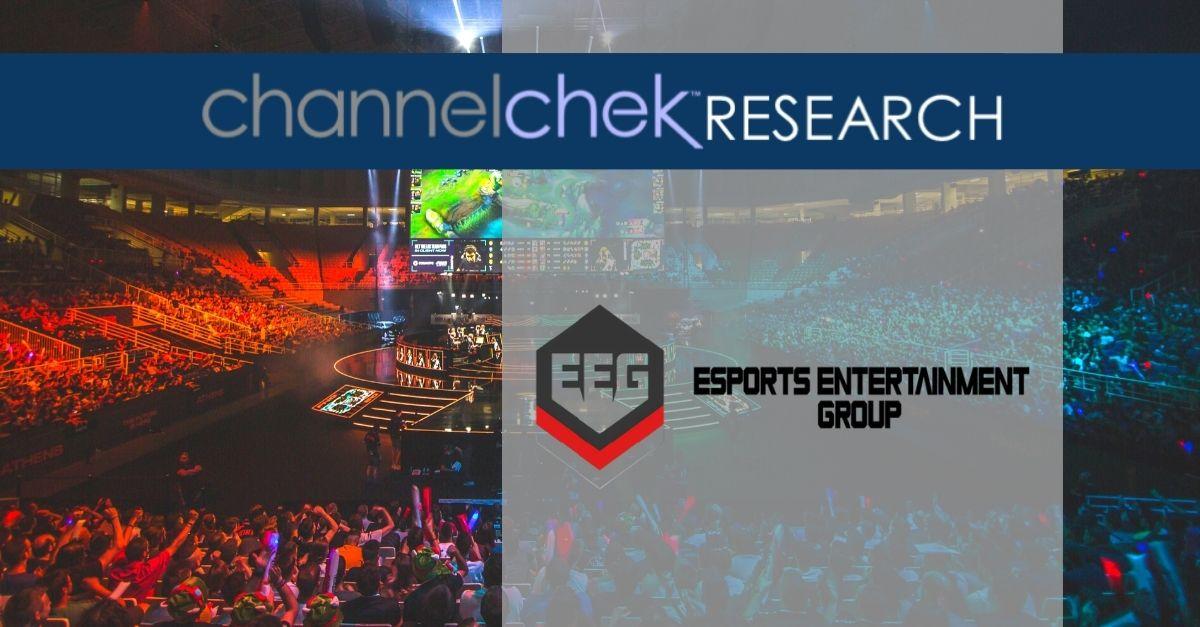
Chakana Copper Intersects Highest Grade Interval To Date 11m of 2.79 g/t Au, 4.04% Cu, and 330.8 g/t Ag (13.30 g/t Au-Eq) At Huancarama, Soledad Project, Peru
Within 93m of 1.63 g/t Au, 0.95% Cu, and 129.2 g/t Ag (4.77 g/t Au-Eq) from 117m
Vancouver, B.C., February 9, 2021 – Chakana Copper Corp. (Tsx-V: Peru; Otcqb: Chkkf; Fra: 1zx) (The “Company” Or “Chakana”), Is Pleased To Release Results For Two Additional Drill Holes With The Highest-Grade Intercepts Reported To Date From The Huancarama Breccia Complex, Within The Soledad Project In Ancash, Peru (Fig. 1). These Holes Complement The Initial Ten Holes Previously Published (See News Releases Dated January 12, 2021, And January 25, 202). Twenty-Two Hq Diamond Core Holes Have Been Completed Thus Far With Continued Success Expanding The Mineralized Breccia At Huancarama.
Mineralized intervals from two additional holes at Huancarama include:

* Cu_eq and Au_eq values were calculated using copper, gold, and silver. Metal prices utilized for the calculations are Cu – US$2.90/lb, Au – US$1,300/oz, and Ag – US$17/oz. No adjustments were made for recovery as the project is an early stage exploration project and metallurgical data to allow for estimation of recoveries are not yet available. The formulas utilized to calculate equivalent values are Cu-eq (%) = Cu% + (Au g/t * 0.6556) + (Ag g/t * 0.00857) and Au-eq (g/t) = Au g/t + (Cu% * 1.5296) + (Ag g/t * 0.01307).
Utilizing the same platform on the south side of the breccia complex that holes SDH20-161 and SDH20-162 were drilled from, holes SDH20-163 and SDH20-164 were oriented east-northeast across the breccia body outlined by the first 10 drill holes (Figures 2 and 3). Both holes intersected continuous mineralization across the breccia body. Hole SDH20-163 was oriented beneath the north edge of the outcropping H1 breccia and intersected 88.05m with 0.28 g/t Au, 0.32% Cu, and 30.2 g/t Ag (1.17 g/t Au-eq) starting at 61m. Hole SDH20-164, drilled beneath the southeast edge of the collapse zone, encountered 93m with 1.63 g/t Au, 0.95% Cu, and 129.2 g/t Ag (4.77 g/t Au-eq) from 117m depth, including 42m with 2.90 g/t Au, 1.41% Cu, and 182.3 g/t Ag (7.44 g/t Au-eq) from 124m. Examples of mineralized drill core from these holes are shown in Figure 4.
David Kelley, President and CEO commented, “these two holes demonstrate the successful continuation of the drilling at Huancarama, further defining a large mineralized breccia pipe. The H1 and H2 breccias exposed at surface coalesce at depth, forming a large coherent breccia pipe. We continue to see excellent grades, particularly in the central part of the breccia body below the collapse zone. Hole SDH20-164 exhibits spectacular mineralization with 11m of 2.79 g/t Au, 4.04% Cu, and 330.8 g/t Ag; and 4m of 2.61 g/t Au, 5.44% Cu, and 926.2 g/t Ag, within two separate intervals. The high-grade zones reported in previous drill holes correlate well with those reported in this hole and are open at depth. Drilling is ongoing at Huancarama and we look forward to reporting additional results soon.”
Huancarama Target Area and the Phase 3b Drill Program
The Huancarama Breccia Complex is located 300m south of and 400m above the deepest breccia intercept at Paloma. Within the complex there are five principal breccia bodies exposed at surface over approximately 200m horizontally (Fig. 5). There is a distinctive feature believed to be a collapse zone with dimensions of 50m by 30m. Unverified reports suggest that this may be due to small-scale mining. Two historic adits are in the complex, one trending north-northeast for 170m along the western side of H1 (Fig. 2), and a second shorter adit of 21m at H2. Surface sampling from the breccia bodies and channel sampling of the adits yielded strongly anomalous gold results (see news release dated November 19, 2019). In addition to several targets within the complex, numerous additional targets exist in the Huancarama and Paloma area.
Results reported here are part of the ongoing Phase 3b drill program, which is fully funded from the Company’s current treasury and is anticipated to see 15,000 metres completed. Phase 3b is testing a cluster of high-grade, gold-enriched tourmaline breccia pipe targets within the Paloma and Huancarama target areas. Thirty-two holes have now been reported from the Phase 3b program.
About Chakana Copper
Chakana Copper Corp is a Canadian-based minerals exploration company that is currently advancing the high-grade gold-copper-silver Soledad Project located in the Ancash region of Peru, a highly favorable mining jurisdiction with supportive communities. The Soledad Project consists of high-grade gold-copper-silver mineralization hosted in tourmaline breccia pipes. A total of 33,353 metres of drilling has been completed to-date, testing nine (9) of twenty-three (23) confirmed breccia pipes with more than 92 total targets. Chakana’s investors are uniquely positioned as the Soledad Project provides exposure to several metals including copper, gold, and silver. For more information on the Soledad project, please visit the website a www.chakanacopper.com.
Sampling and Analytical Procedures
Chakana follows rigorous sampling and analytical protocols that meet or exceed industry standards. Core samples are stored in a secured area until transport in batches to the ALS facility in Callao, Lima, Peru. Sample batches include certified reference materials, blank, and duplicate samples that are then processed under the control of ALS. All samples are analyzed using the ME-MS41 (ICP technique that provides a comprehensive multi-element overview of the rock geochemistry), while gold is analyzed by AA24 and GRA22 when values exceed 10 g/t by AA24. Over limit silver, copper, lead and zinc are analyzed using the OG-46 procedure. Soil samples are analyzed by 4-acid (ME-MS61) and for gold by Fire Assay on a 30g sample (Au-ICP21).
Results of previous drilling and additional information concerning the Project, including a technical report prepared in accordance with National Instrument 43-101, are made available on Chakana’s SEDAR profile at www.sedar.com.
Qualified Person
David Kelley, an officer and a director of Chakana, and a Qualified Person as defined by NI 43-101, reviewed and approved the technical information in this news release.
ON BEHALF OF THE BOARD
(signed) “David Kelley”
David Kelley
President and CEO
For further information contact:
Joanne Jobin, Investor Relations Officer
Phone: 647 964 0292
Email: jjobin@chakanacopper.com
Neither TSX Venture Exchange nor its Regulation Services Provider (as that term is defined in the policies of the Exchange) accepts responsibility for the adequacy or accuracy of this release.
Forward-looking Statement Advisory: This release may contain forward-looking statements. Forward-looking statements involve known and unknown risks, uncertainties, and other factors which may cause the actual results, performance, or achievements of Chakana to be materially different from any future results, performance, or achievements expressed or implied by the forward looking statements. Forward looking statements or information relates to, among other things, the interpretation of the nature of the mineralization at the Soledad copper-gold-silver project (the “Project”), the potential to expand the mineralization, and to develop and grow a resource within the Project, the planning for further exploration work, the ability to de-risk the potential exploration targets, and our belief in the potential for mineralization within unexplored parts of the Project. These forward-looking statements are based on management’s current expectations and beliefs but given the uncertainties, assumptions and risks, readers are cautioned not to place undue reliance on such forward- looking statements or information. The Company disclaims any obligation to update, or to publicly announce, any such statements, events or developments except as required by law.
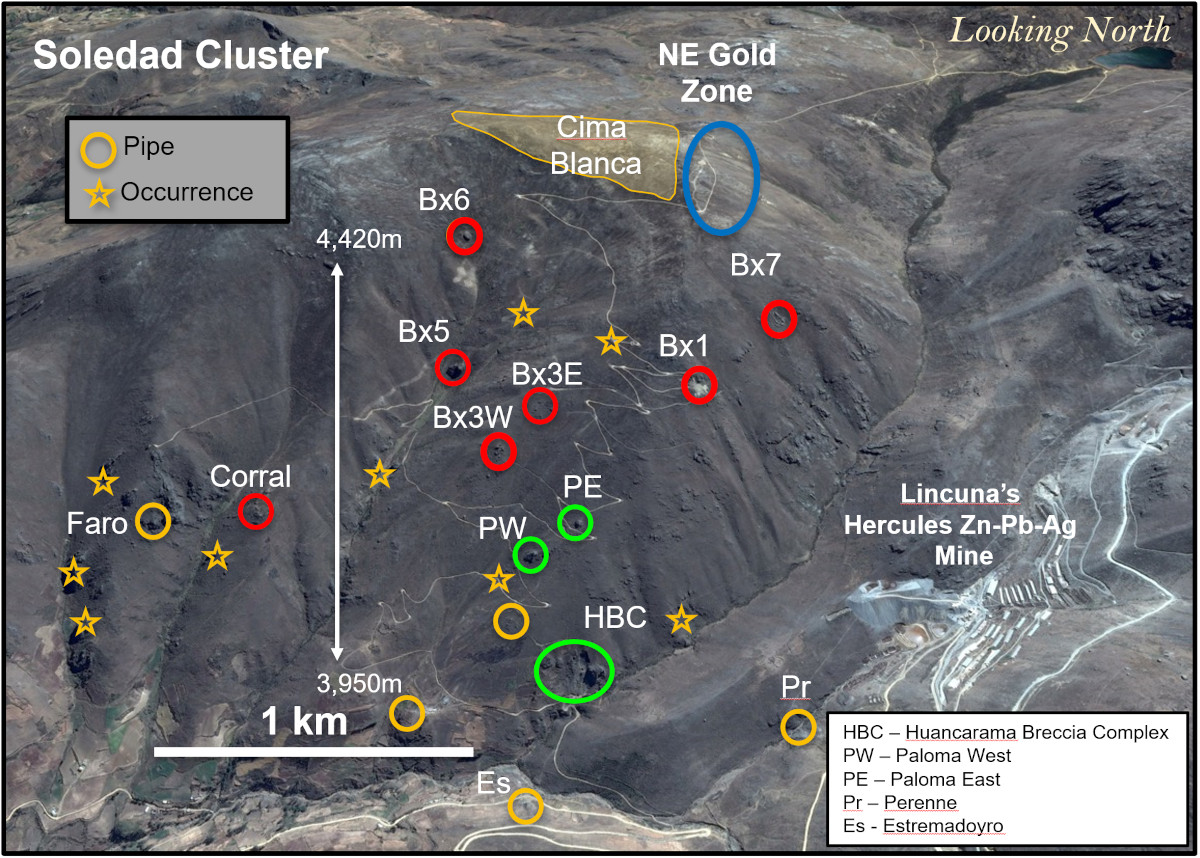
Figure 1 – View looking north showing breccia pipes and occurrences within the northern Soledad cluster. Pipes that have been drilled in previous campaigns are shown in red. Targets shown in green are the focus on this 15,000m drill campaign. Other pipes and occurrences remain to be tested by drilling. Additional breccia pipes occur on the south half of the property and are not shown here.
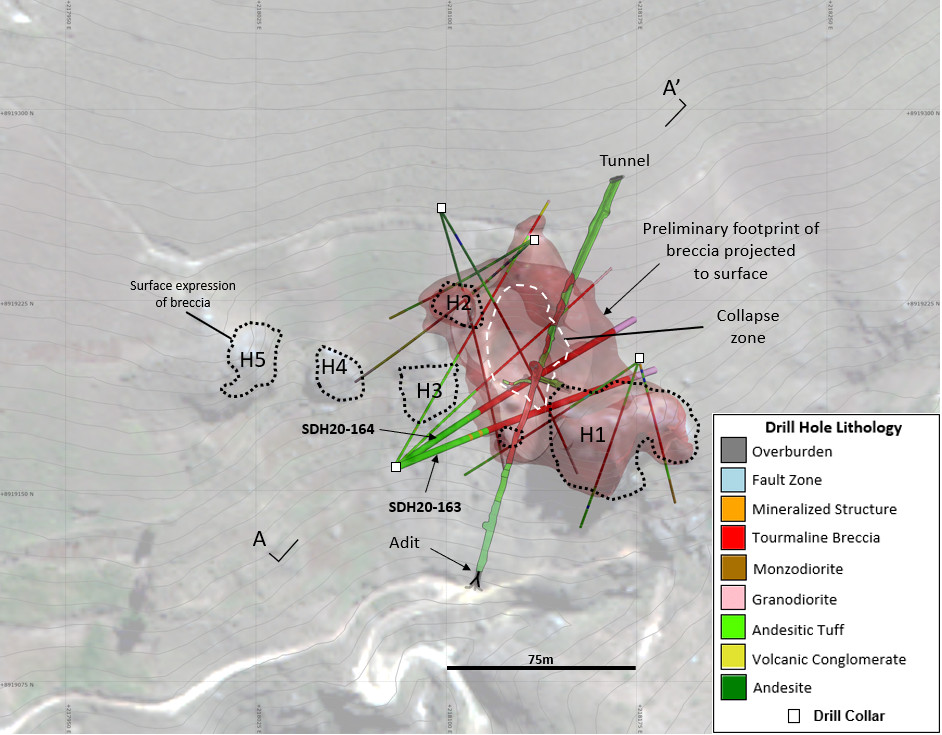
Figure 2 – Map of the Huancarama Breccia Complex and drill hole lithology in holes completed to date. Red represents tourmaline breccia based on the first ten holes and lithology mapped in the underground tunnel. Black dotted outlines show surface expression of mapped breccias; white dashed line shows collapse zone. Location of section line for Figure 3 indicated.
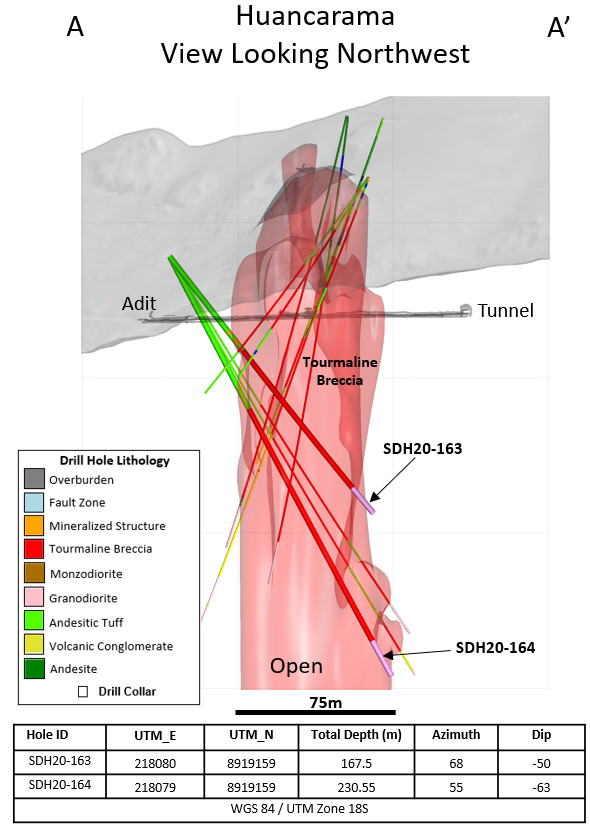
Figure 3 – Section looking northwest highlighting the drill holes at Huancarama reported in this release. Light red 3D shape shows preliminary shape of breccia based on the first ten holes and lithology mapped in the underground tunnel.
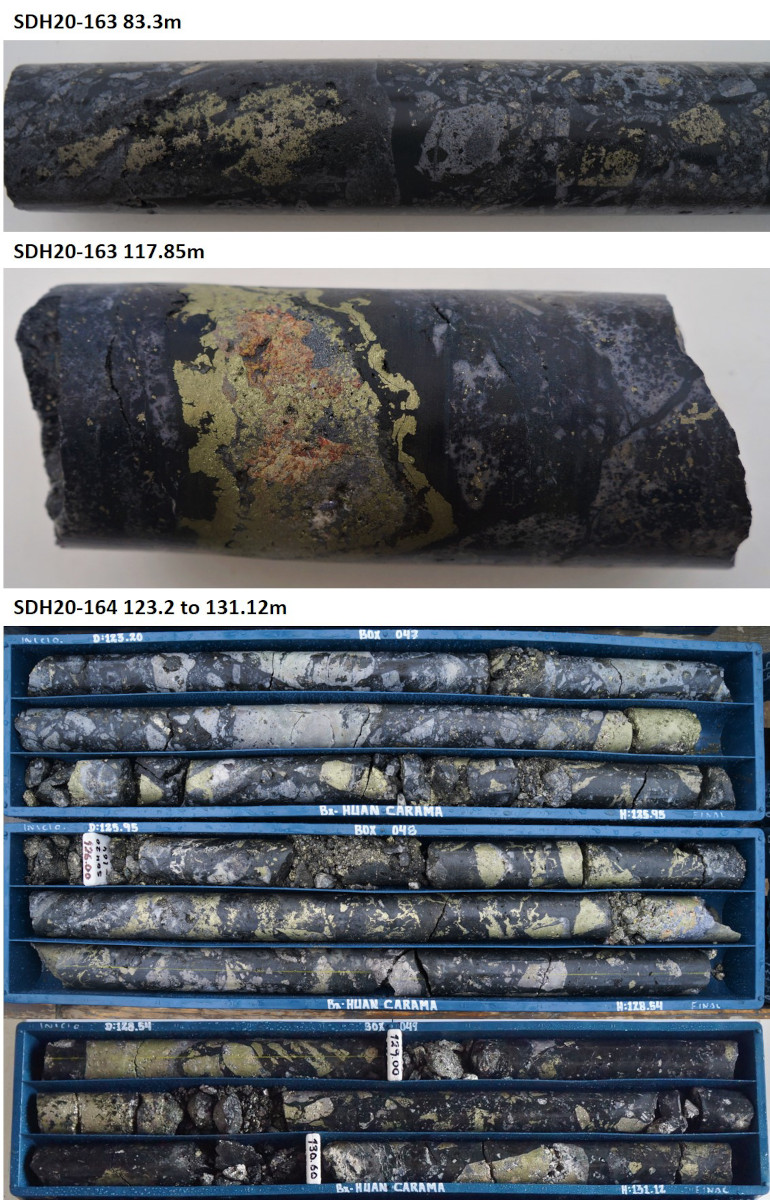
Figure 4 – Core photos from Huancarama: SDH20-163 (83.3m) mosaic tourmaline breccia with partial clast replacement by chalcopyrite; SDH20- 163 (117.85m) tourmaline breccia with chalcopyrite and red sphalerite open space filling ; SDH20-164 (123.2 to 131.12m) – example of high-grade copper sulfide (chalcopyrite) clast replacement and sulfide-cemented breccia. Core diameter is 6.35cm (HQ) in all instances.
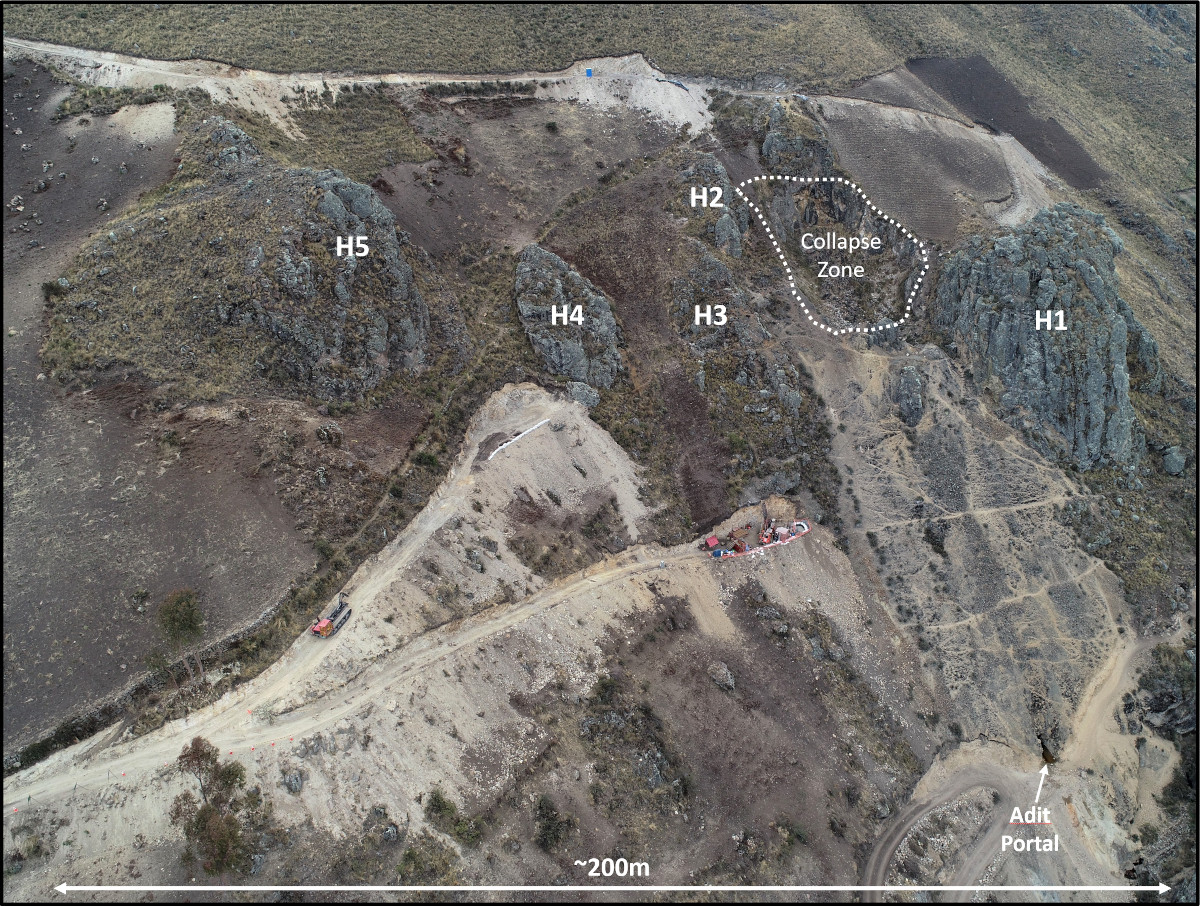
Figure 5 – Drone image looking northeast at the Huancarama Breccia Complex showing the five principal tourmaline breccia bodies exposed at surface (H1-H5), historic adit portal, and drill platforms. Note drill rig in center of image.
SOURCE: Chakana Copper

